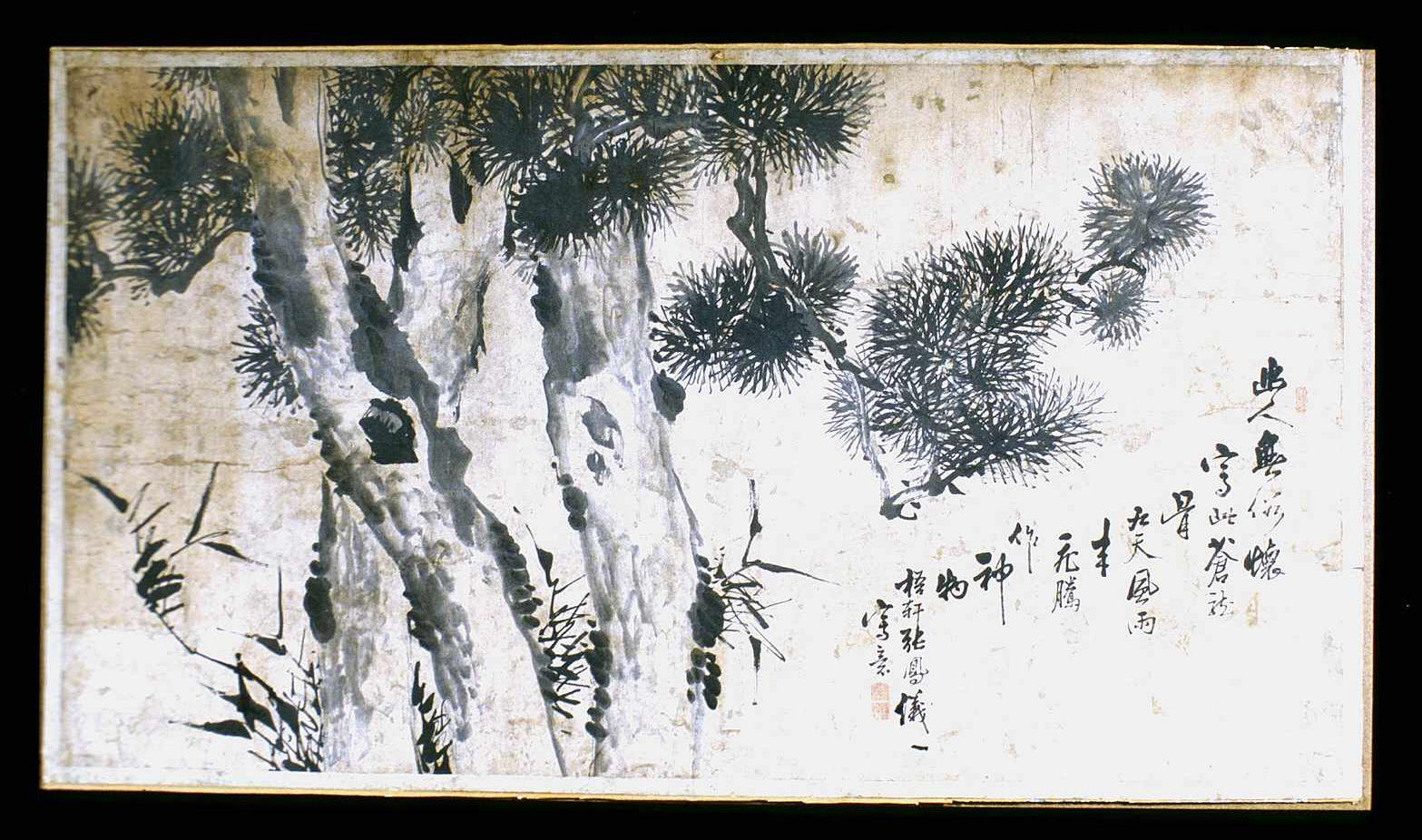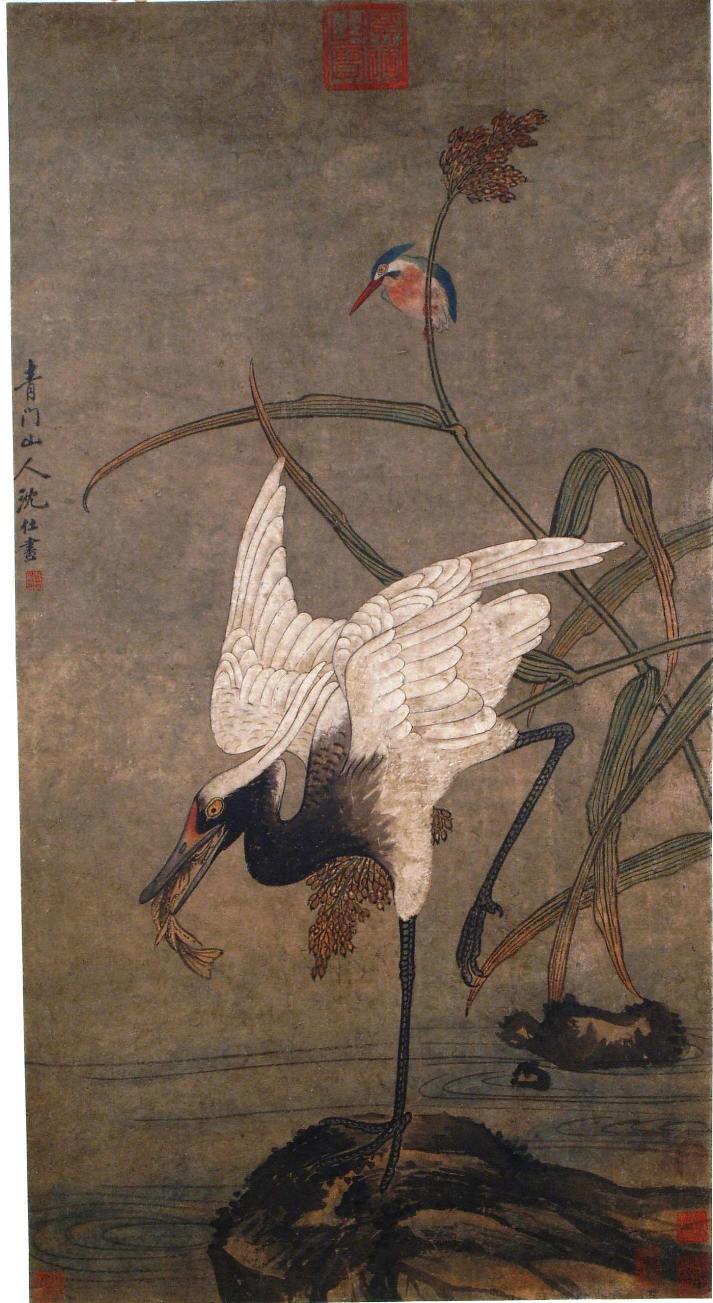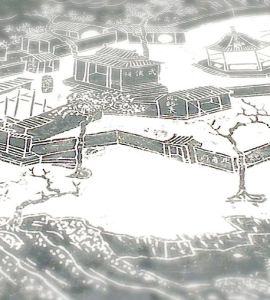The arts of Calligraphy and Painting

Prof. Nicoletta Celli
The arts of calligraphy and painting are greatly admired and enjoy unsurpassed prestige in China, equaled only by the high regard in which poetry is held.

Old Pines - Ink brush (1920)
The preeminence of these disciplines in Chinese art depends on their sharing the same instruments (brush, ink, paper or silk) and the belief that they provide insights into the heart of man and the world. This knowledge comes from the brush, which is more like a water diviner’s dowsing rod used to perceive a hidden reality than an instrument for representing it.
Just as calligraphy is able to reveal the deepest sensibility and personality of the calligrapher through the slightest modulations in the way the brush flows over the surface, so the underlying weave linking all the elements in a landscape painting is drawn out by the way the artist applies the ink.
In addition to examples of pure calligraphy and landscape painting, it is therefore no surprise to find other works that combine calligraphy and painting in a dialogue that exploits and extends the range of the images and emotions each contributes.
Appreciating Chinese landscape painting entails jettisoning certain preconceptions: firstly, the viewer should not seek a mimetic representation of reality (along with a naturalistic use of color, lighting and spatial relationships). The support used, whether a horizontal or vertical scroll, is itself conducive to contemplation over time.

Wader, by Shen Shi
Ming Dynasty (1488-1565)
A horizontal scroll only discloses its full effect little by little and should never be read in its entirety, but viewed in sections as it unravels from right to left and interpreted like a musical score, with its recurring themes, rhythm and pauses.
But even a vertical scroll, hanging on a wall and revealing its full content at a glance, has no single vanishing point and thus no central focus where the eye can rest. Instead, the viewer is encouraged to seek it by following the route the painter has prepared from the bottom to the top.
Some landscapes have a complex structure to be explored in all their minutely described details, while others afford few opportunities to wander and still others, which may be described as impossible or infinite landscapes, seem to welcome the observer only to abandon him immediately after without a landmark to guide him.
Bearing these points in mind, it will be clear that what counts is not the variety of the subject matter, but the way it is depicted. In this way, the meanings behind Chinese landscapes will gradually unfold, yielding their symbols, metaphors and subtle reflections in ink on man and his experience of the world.
During the thousands of years of its development, this tradition has seen several different styles and techniques predominate at various times and the values and messages that landscape paintings have conveyed have changed with them.
The works that have survived enable us to place the apex of this art form in around the tenth century, although its roots are certainly far more ancient.

